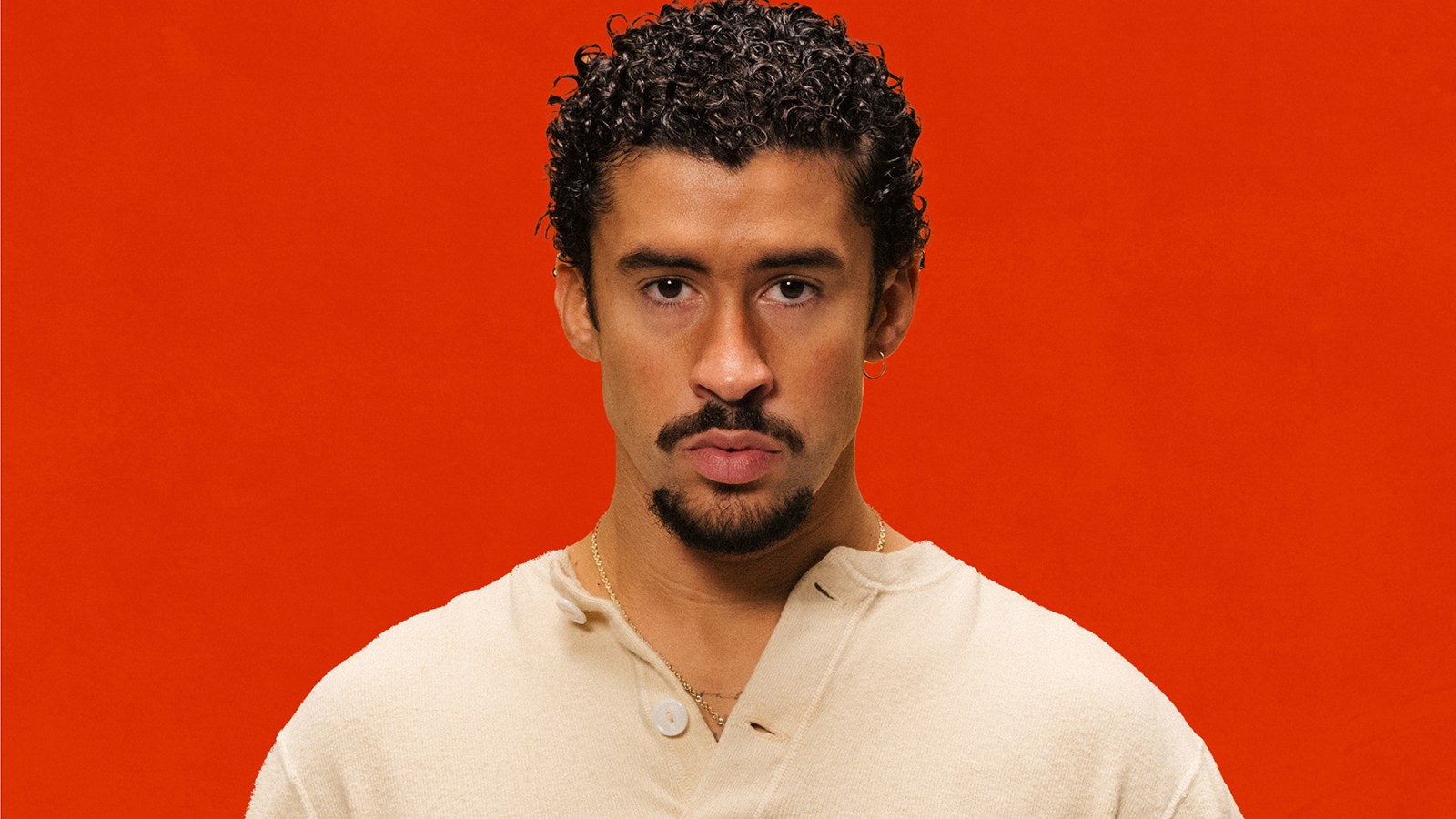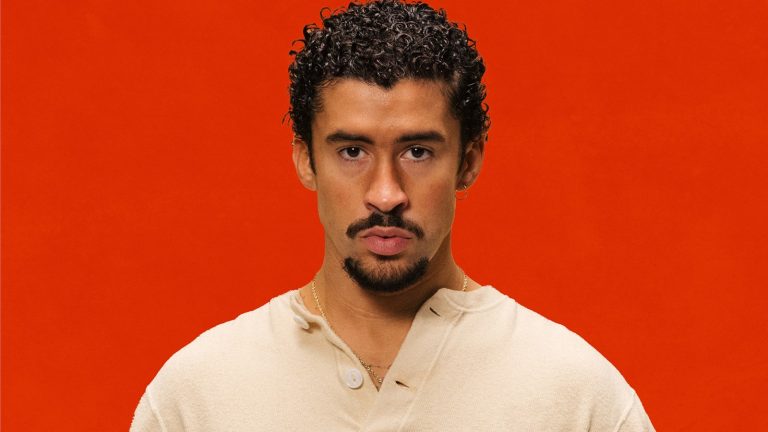It’s been a little over a year since Bad Bunny released his unabashed fifth album, 2023’s Nadie Sabe Lo Que Va a Pasar Mañana. The rap-forward LP found the global superstar flaunting his lavish lifestyle, including a new Hollywood Hills zipcode and supermodel girlfriend. Amidst the trap-drenched beats thumping around him in dark nightclubs, Bad Bunny sounded lost in a vortex of unfathomable fame as he grappled with the frenetic year that followed his career-defining album, Un Verano Sin Ti. It all came across as inaccessible — worlds away from the former grocery store bag boy turned reggaeton innovator. So where do you go when you need to find yourself again? For Bad Bunny, the answer is back home.
On his sixth album, Debí Tirar Más Fotos, Bad Bunny brings listeners along for his triumphant homecoming with 17 songs that traverse Puerto Rico’s rich kaleidoscope of genres. It’s homegrown, jubilant, and fresh as Benito takes the best moments from Un Verano Sin Ti and pushes the limits of his continuously experimental sound into the unchartered territory of Puerto Rican folk music and salsa. While Bad Bunny honors his homeland and snapshots of his life there, he finds pieces of himself that felt lost just a year ago: the love-lorn poet, the dreamer, and, most of all, the proud puertorriqueño.
The journey starts in New York, a key point in the Puerto Rican diaspora, from the “Loisaida” to the Bronx. Bad Bunny invokes the city to declare his unrivaled greatness as a musician, crediting Boricua legends who’ve paved his way like salsa singer Willie Colon and Nineties hip-hop hitmaker Big Pun. He even samples Puerto Rico’s “Godfather of Salsa” Andy Montañez Rodrígue’s rendition of El Gran Combo de Puerto Rico’s song “Un Verano en Nueva York” against a boisterous dembow beat. It’s a bold track that sets the tone for the Debí Tirar Más Fotos adventure. After a pit stop in Miami for a quick perreo filled with nods to classic reggaeton from the early 2000s, Bad Bunny finally lands in Puerto Rico with the crucial reminder: it’s both his and reggaeton’s birthplace.
Bad Bunny can’t help but revel in the childish joy of being back home, and the euphoric title track sums this feeling up. “DTMF” blends Nintendo-inspired beats in the vein of his landmark 2020 album Yo Hago Lo Que Me Da La Gana with lively plena, a Puerto-Rican folk call-and-response genre. Here the chants sound like they were recorded right in the emerald green backyard displayed on the album cover with Bad Bunny’s friends shouting back at him. It’s almost as if Benito is sitting in one of those white plastic lawn chairs, drinking rum and taking it all in. The now 30 year-old’s lyrics are a big departure from his 2023 mindset as he shares his new life philosophy: “Ya no estamo’ pa’ la movie’ y las cadena/ ‘Tamos pa’ las cosa’ que valgan la pena” (We’re no longer about the flashy stuff and chains/We’re here for the things that are truly worth it.) Those things? Loved ones, his beloved archipelago, and commemorating each by taking more photos of them.
Bad Bunny makes sure to bring rising artists from Puerto Rico along for the ride on Debí Tirar Más Fotos, and the payout couldn’t be better. Singer-songwriter RaiNao croons on “Perfumito Nuevo,” Chuwi’s Lorén Torres delivers her piercing soprano for trap-charged daydream “Weltita,” while Dei V and Omar Courtz spar verses in an old-school reggaeton track. Each collaboration feels true to the artists’ unique sound, almost like the roles are reversed and Bad Bunny is the featured voice. The most surprising and rewarding collaboration comes from Los Pleneros de la Cresta, a band dedicated to keeping plena alive in modern times. Their track “Café Con Ron” pairs folky plena with show-stopping congos for a fun, buoyant trek up to the mountainside of Puerto Rico.
In “Baile Inolvidable” Bad Bunny shows where those earlier salsa references were leading: to his own take on the classic Caribbean genre. He makes out like an expert with a chorus of roaring trombones and clapping claves that seem to tell their own melodic story enmeshed against Un Verano Sin Ti producer MAG’s echoey synths. The booming refrain (“No, no te puedo olvidar/ No, no te puedo borrar/Tú me enseñaste a querer/Me enseñaste a bailar” or “No, I can’t forget you/No, I can’t erase you/You taught me how to love/You taught me how to dance”) is powerful enough to become an instant classic with simple, nostalgic lines that echo in your head long after the last note.
The yearning at the center of Bad Bunny’s music is on heavy rotation on DTMF with songs steeped in haunting heartbreak and regret. From soft scorcher “Bokete” to cuatro-led bolero “Turista,” it’s the saddest Bad Bunny has ever sounded — and the most vulnerable. While it’s a new, revealing look into Benito’s corazón, these tracks pale in comparison to the album’s spirited odes to PR.
Meanwhile, Bad Bunny’s political side, which was notably absent on his last album, shines through again. The decima-inspired “Lo Que Le Pasó a Hawaii” fuses the poetic folk music from Puerto Rico’s jibaro people, who reside in the countryside and mountains of the island, with taunting hip-hop percussion that makes every word sound like a warning. “No, no suelte’ la bandera ni olvide’ el lelolai,” (“No, don’t let go of the flag nor forget the lelolai”) Benito warns his people before comparing Puerto Rico’s ongoing struggle to decide its own status between independence from the U.S., statehood, or to remain an American colony with that of Hawaii.
Bad Bunny closes out the album with his most political act. On “La Mudanza,” he declares he’s staying in Puerto Rico forever — a defiant statement at a time when corruption on the island is pushing more and more natives out. To write such a proudly Boricua song, and album, at the height of his fame is Benito’s ultimate form of resistance. As Bad Bunny confidently moves between a whirlwind of rumba rhythms and raucous reggaeton sirens, it’s like he has found a whole new peak of greatness at the top of Puerto Rico mountains. On Nadie Sabe, he claimed he was in his prime. Now, on Debí Tirar Más Fotos, it’s clear he finally is.




Leave a Comment